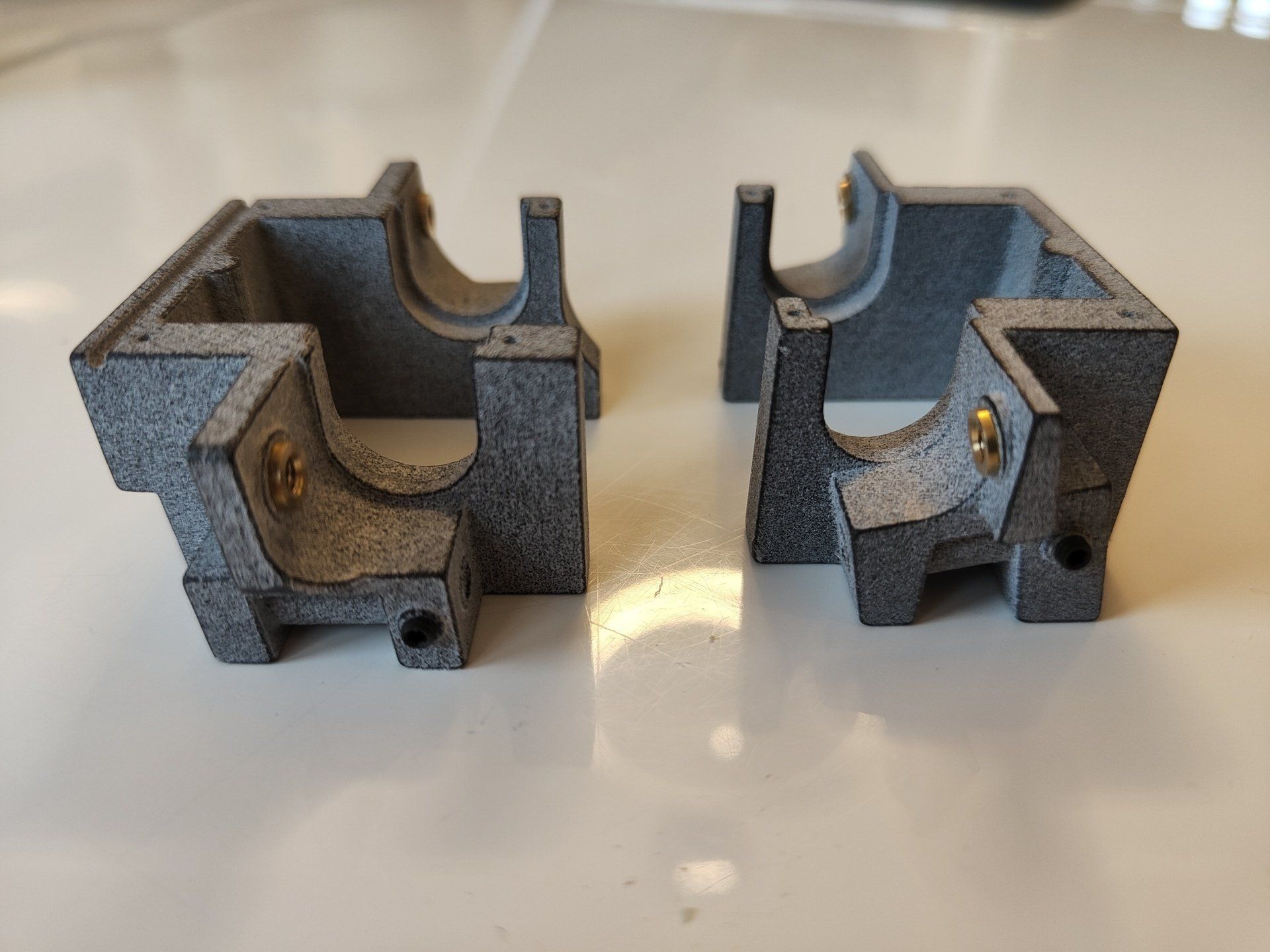Multi Jet Fusion
Multi Jet Fusion (MJF) printing is carried out on commercial Hewlett Packard printers. It works by dropping layers of nylon powder on to the print bed in a fine layer and fusing each layer using infra-red. As each layer builds up it is supported by the powder underneath, so no supporting bridges are required as in filament printing. At the end, the unfused material is sucked away to be used again, and the finished component is left.
The standard unpolished finish has a grainy feel. My standard parts are polished in a media bath to remove the grainy surface. For a few components, such as bumpers, I have the part shot peened, which provides a smoother, more scratch resistant surface but does slightly alter the dimensions so I dont use it on parts that require an accurate fit.
The finished components are equivelant in strength to late 1980s early 1990s injection moulded components. I redesign later parts to take into account the greater stiffness of later materials, such as on Losi suspension arms. The aim is to provide useable, affordable spare for running the cars, rather than replica items for display.
Selective Laser Sintering
Selective Laser Sintering (SLS) uses a similar process to MJF but utilises a laser to fuse the material together. However, whereas MJF printed parts have equal strength in all direction, SLS only matches it in one direction and is weaker in the others. This makes it unsuitable for stressed parts. I have also found the accuracy is not as good as MJF.
The advantage it does have is that the natural colour is white, and can be dyed. MJF material has a natural grey finish and can only be dyed black.




